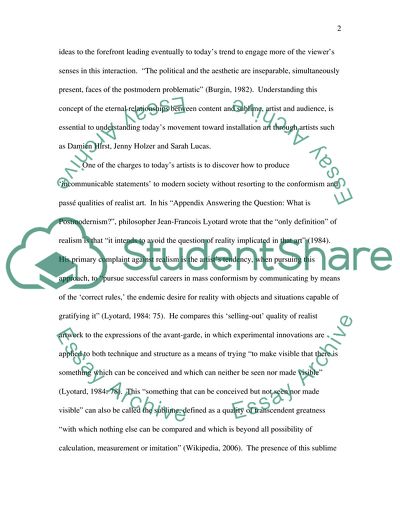Cite this document
(“Installation Art as the Newest Form of Expression Essay”, n.d.)
Installation Art as the Newest Form of Expression Essay. Retrieved from https://studentshare.org/visual-arts-film-studies/1552291-installation-art-as-the-newest-form-of-expression
Installation Art as the Newest Form of Expression Essay. Retrieved from https://studentshare.org/visual-arts-film-studies/1552291-installation-art-as-the-newest-form-of-expression
(Installation Art As the Newest Form of Expression Essay)
Installation Art As the Newest Form of Expression Essay. https://studentshare.org/visual-arts-film-studies/1552291-installation-art-as-the-newest-form-of-expression.
Installation Art As the Newest Form of Expression Essay. https://studentshare.org/visual-arts-film-studies/1552291-installation-art-as-the-newest-form-of-expression.
“Installation Art As the Newest Form of Expression Essay”, n.d. https://studentshare.org/visual-arts-film-studies/1552291-installation-art-as-the-newest-form-of-expression.


